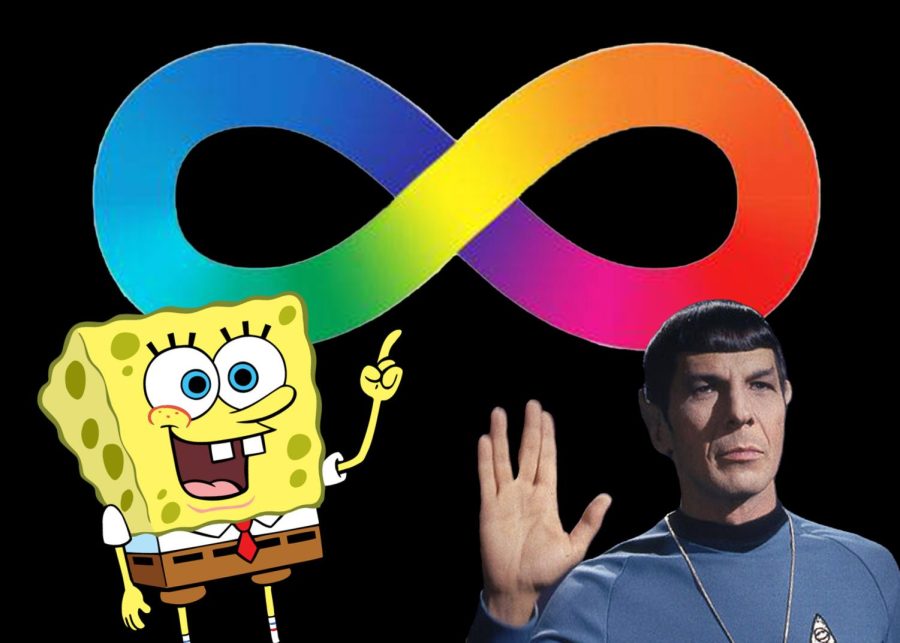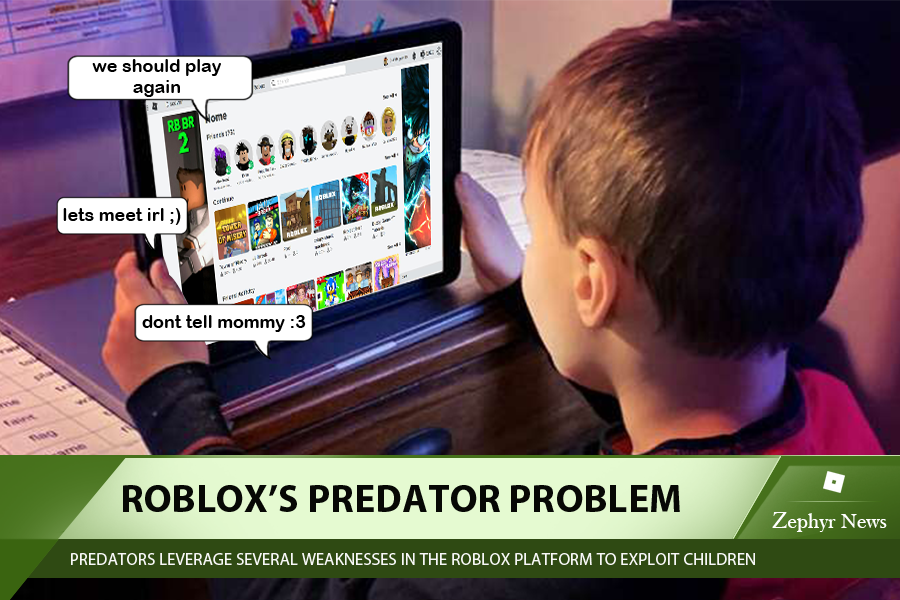Autistic coded characters are important
Spongebob and Spock in front of the autistic infinity symbol, two characters who have a lot of common autistic traits.
April 8, 2022
April 1st marked the beginning of Autism Awareness month, a time dedicated to supporting autistic folks, raising awareness and creating acceptance for people who have autism.. It can be hard to find autistic characters in the media, and when they are shown in media, they’re often portrayed as annoying, burdensome or troublesome. This not only provides horrible representation for a group that already faces challenges, but it also stereotypically represents a comparatively small part of the community. And not all of them are explicitly stated- the coding of a character is important too.
So, what is character coding? Character coding is where a character in TV shows, movies, games, books, etc. is not explicitly stated to be something, but they have traits that are attributed to that thing, or exhibit behavior that’s characteristic of said thing. For example, if a character were to make repetitive movements and noises, or if they have a hard time understanding jokes and sarcasm, they could be interpreted as autistic. It isn’t explicitly stated as part of their character, but these attributes can be very important for autistic folks enjoying the media.
In order for the community to have positive representation, it’s important for the character to have positive relationships with others. A more recognizable example of an autistic coded character is Sheldon Cooper, from The Big Bang Theory. Sheldon has trouble with jokes and sarcasm, as well as understanding empathy, and he experiences intense hyperfocus on his projects. He knows everything about the things he’s interested in and has trouble connecting to his peers. All of these traits are characteristic of someone with autism, so despite him being confirmed by writers as neurotypical, it’s easy to see why people would interpret him in such a way. That being said, even if people interpret him as autistic, they really shouldn’t, for one simple reason: no one likes him. Like a lot of characters who are actually confirmed to be autistic, he’s constantly portrayed as annoying, not a good person to be around, and selfish. He drives his friends crazy, and he’s constantly the butt of the joke. He’s seen as rude and unlikable even by the people close to him. He’s patronized, and treated as a child several points throughout the show. If someone watching the show were to relate to Sheldon’s behaviors and see how he was treated by the rest of the cast, they would be downright heartbroken by how poorly he’s treated. He’s seen as the stereotypical autistic person, and yet nobody likes him. That’s why, while it might be accurate in certain ways, and while his character could be representative of certain experiences, he isn’t a good representation as a whole.
If you’re looking for a much better representation with a character quite like Sheldon, you can find it with the character who inspired him- Spock, from “Star Trek: The Original Series.” Spock, much like Sheldon, knows everything about the things he’s interested in, he has trouble with jokes and sarcasm, and he doesn’t really understand others emotions. The biggest difference between him and Sheldon is that people hold a strong respect for him. He’s seen as an asset to the rest of the crew on the USS Enterprise, and the captain of the ship fights for his right to be on board. He’s respected and considered a friend by most of the people working with him, a stark contrast from how Sheldon Cooper is treated.
Characters like Spock aren’t the only type of autism that should be represented. While it is common for autistic people to appear much more calm and monotone, with a lack of understanding for empathy, there’s also a good portion of people who experience hyper-empathy, and who experience emotions wildly. A good representation for this type is none other than Spongebob Squarepants. Similar to Spock he has a lot of knowledge on the things he likes, and experiences hyperfocus while at his job and when enjoying a hobby like jellyfishing. He experiences emotions so strong they can lead him to having meltdowns. He also exudes another common trait of autism: stimming. Stimming is defined as repetitive movements and noises as a way of expressing and stimulating oneself, as a way of self-regulating. This helps people who experience autism calm down during episodes of overstimulation or understimulation, and can help to prevent meltdowns. Spongebob does this frequently, in a lot of creative ways, given that he is literally made of sponge. He dances, swings his arms, runs around flailing, all as ways to express his excitement. He’s also liked by just about everyone but Squidward- he’s a good worker, and a good friend to everyone in Bikini Bottom.
These characters are lovable, they are fun and they are important. Growing up unable to relate to the people you see around you, or being ridiculed for acting differently, can be extremely damaging for non-autistic children, and that damage can be even harder for kids who have autism. These kids aren’t burdens. They aren’t annoyances. They aren’t unlikable. They aren’t monsters, they just need a little extra help. If you’re going to portray them as troublesome for simply being different, the problem lies with you, not them.






